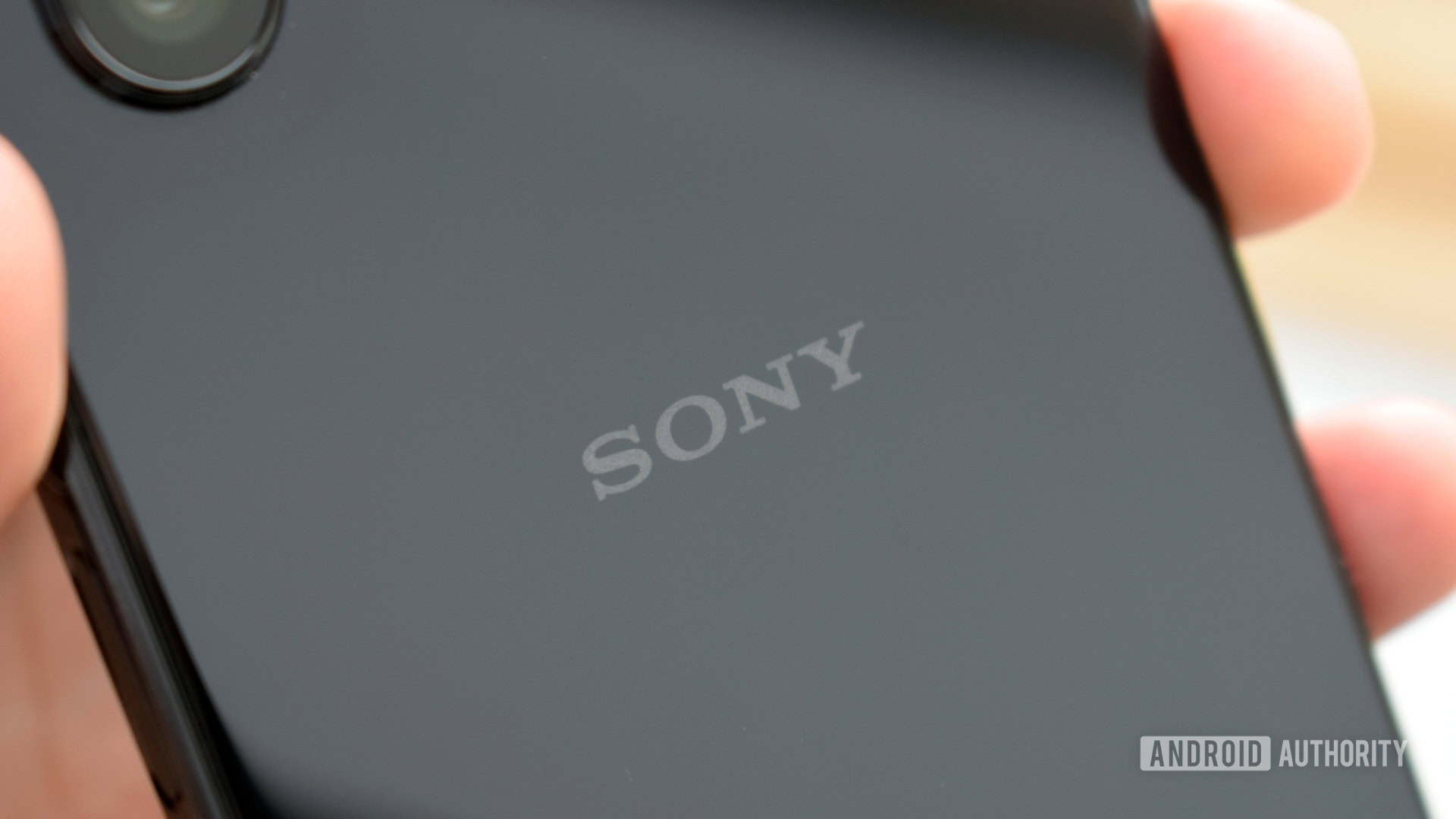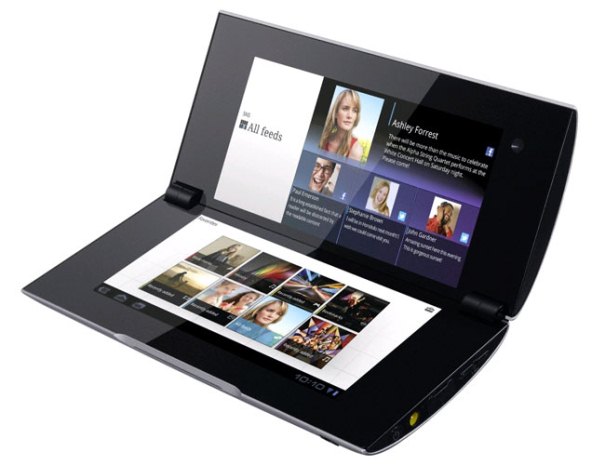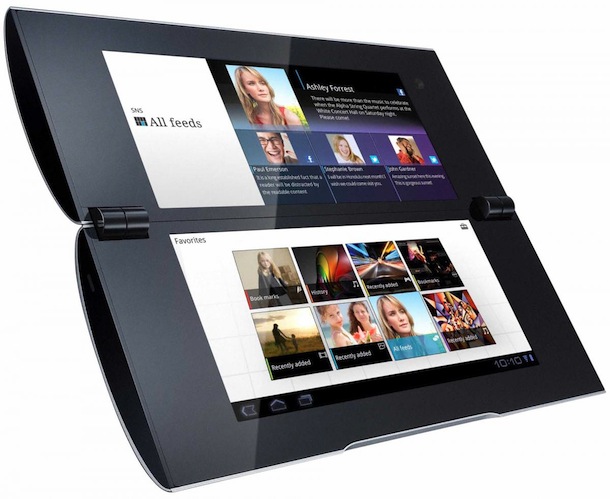Affiliate links on Android Authority may earn us a commission. Learn more.
Did you know: Sony once sold a Nintendo DS-style Android tablet
June 27, 2021

There was a time when Sony sold some reasonably decent Android tablets. The premium Xperia Z tablet range offered some very high-end specs back in the day, but as we’ve come to expect from Sony, they were rather expensive. The range offered everything you’d expect in a traditional Android tablet but it came to end an in 2014 after just two short years on the market.
Sony’s tablet ambitions weren’t always so conventional. Before the Xperia Z tablet range came a rather more off-the-wall product with 2011’s Sony Tablet P. With two displays and a central hinge, the design was much more reminiscent of the dual-screened Nintendo DS gaming handheld which launched all the way back in 2004. Sony had been experimenting with this form factor for a number of years prior, with devices like the Sony Vaio P compact “lifestyle PCs” which ran Windows XP. Needless to say, the idea didn’t exactly catch on.
Meet the Sony Tablet P

Sony’s clamshell tablet was pretty much the antithesis of commercial success. Looking back, one does wonder what was going through the minds of Sony’s engineers at the time.
Hardware-wise, the Sony Tablet P boasted two 5.5-inch displays and, although designed to fit in your pocket, weighed a rather hefty 372g (0.82lb) and was 28mm (1.1-inches) thick when closed.
The device was powered by a dual-core NVIDIA Tegra 2 processor, with 1GB of RAM, and a whopping 4GB of onboard storage. That wasn’t exactly cutting edge at the time and it was notably less powerful than 2012 flagship smartphones like the quad-core Samsung Galaxy S3. Yet Sony had the audacity to charge $599, which was more expensive than rivals like the Samsung’s Galaxy Tab Plus 7.0 as well as most flagship smartphones back then.
Perhaps worse though was the software. The Sony Tablet P shipped with the tablet-specific Android 3.2 Honeycomb OS out of the box. Sony built its own applications to make use of the dual-display but these were a mixed bag themselves. Videos and games played on the top display with controls displayed on the bottom panel. Sony’s keyboard filled the bottom display when sending messages, emails, and the like. Sony even leveraged a few of its PlayStation titles for the Tablet P, although the selection was small and never expanded upon.
Worse still, the device didn’t have any built-in multitasking features; so you could forget watching video and web browsing at the same time. Third-party apps obviously weren’t dual-screen or even aspect-ratio aware back then. They either ended up on the small top screen or stretched awkwardly across both screens, complete with a thick black bar across the middle of the app.
More from Sony: PlayStation 5 buyers guide: What you need to know
It was a novel idea, but the Sony Tablet P turned out to be one of the biggest technological flops for the company. Prices dropped down to as little as $199 just months after launch. While an Android 4.0 Jellybean update was planned and even announced, the tablet disappeared from Sony’s storefront before the update ever rolled out.
Simply ahead of its time?

While the Sony Tablet P may have been a flop all those years ago, it’s hard not to draw comparisons to some more recent efforts in the mobile industry. Dual screen and clamshell ideas have stuck around at the peripheries. Some recent examples include the Samsung Galaxy Z Flip, the LG G8X with its dual-screen accessory, the slightly more off-the-wall LG Wing, and the woefully misjudged Microsoft Surface Duo.
Related: The best foldable phones you can get
Some of these devices share similar issues to the Tablet P, such as hinges and creases mid-display, or dubious software elements that struggle to make optimal use of the extra screen real estate. However, both hardware and software have improved considerably in the last decade. Flexible, foldable, and rollable displays are busting through previous hardware limitations, while better OS support for multi-window and variable aspect ratios is helping to solve the app problem. Weird and wonderful display setups are becoming increasingly feasible with every passing year.
If extra screen space really is the future of mobile, and phones like the Samsung Galaxy Z Fold 2 and OPPO X 2021 concept become mainstream, next time we look back at the Sony Tablet P we might be calling it ahead of its time.
This is the sixteenth post in our “Did you know” series, in which we dive into the history books of Android and consumer technology to uncover important and interesting facts or events that have been forgotten over time. What do you want to see us cover next? Let us know in the comments.
- Did you know: You could once buy NVIDIA-powered smartphones
- Did you know: Xiaomi’s first product wasn’t a phone
- Did you know: The first smartphone to drop the headphone jack wasn’t an iPhone
- Did you know: The most popular music streaming platform isn’t Spotify
- Did you know: Roku was nearly a part of Netflix
- Did you know: Windows 10 Mobile (almost) supported Android apps
- Did you know: This 2014 Galaxy phone had 10X optical zoom
- Did you know: The first Nokia Android phone was released way back in 2014
- Did you know: This was the first water-resistant Android phone
- Did you know: The Surface Duo wasn’t Microsoft’s first dual-screen foldable
- Did you know: HTCowned Beats before Apple
- Did you know: The LG V40 opened the era of modern triple camera phones
- Did you know: Samsung once thought Android was a joke
- Did you know: Android was originally designed for digital cameras
- Did you know: The Samsung Galaxy Note was mocked and predicted to flop at launch